Schengen: A tiny village that changed European travel
 Zoonar GmbH/Alamy
Zoonar GmbH/AlamyThe now-renowned Schengen Agreement was signed in a tiny village in Luxembourg’s south-east, a location that was drenched in symbolism.
Blink, and you could through Europe’s smaller nations without realising. Take Luxembourg, which can be crossed by car in just over an hour at its widest point. Before you know it, you’ve popped out into the surrounding countries of , or Belgium, with only the eagle-eyed spying the border sign and the striped flags of the Grand Duchy far behind.
The ability to do this is partly down to its petite size, but also thanks to a Luxembourgian legacy: a treaty signed more than 30 years ago in the tiny village of Schengen in the country’s far south-east. The now-renowned Schengen Agreement dramatically changed the way we travel within Europe, and continues to evolve today.
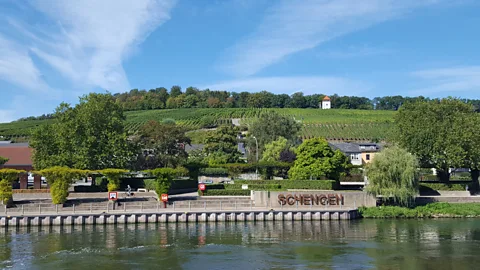 Kirsten Henton
Kirsten HentonNot-so-little Luxembourg
On the surface of things, Luxembourg could be viewed as a starchy centre of commerce, where European bigwigs busy themselves and money is made. It also appears to take up very little space on the map and, as a result, is often unwittingly overlooked as a destination in favour of its more sizeable neighbours.
You may also be interested in:
• Europe’s strange border anomaly
A founding member of what is now the European Union, the diminutive country is home to one of the EU’s three capitals – Luxembourg City (along with Brussels and Strasbourg) – and remains a key player in the running of the union.
It stands out as a constitutional monarchy wedged between the two giant republics of and , and has paid the price for its location in not one, but two world wars, ensuring there’s plenty of history on offer. There’s a flourishing domestic wine industry, an impressive restaurant scene, countless museums and memorials (from the Unesco-listed fortress and old city centre to the grave of General George S Patton Jr), and a seemingly inherent love of seafood, cheese and all things pastry.
In 1985, Luxembourg was also instrumental in the creation of a landmark legislation: the g of the Schengen Treaty, a unilateral agreement ensuring border-free travel within European member countries.
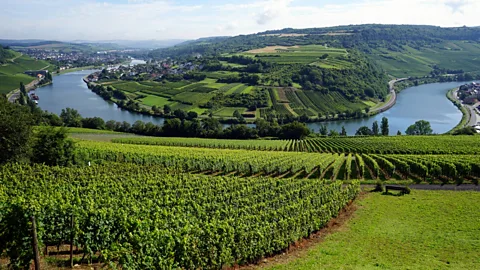 Valerii Shanin/Alamy
Valerii Shanin/AlamyOn the trail of this historic spot, I travelled down the Moselle Valley, a quiet, unassuming part of eastern Luxembourg. The Moselle River lazily acting as a natural border between Luxembourg and . The valley is evidently central to the country’s wine production, with row upon row of vineyards draped over the low-lying hillsides interrupted only by a scattering of towns and villages.
Just as I thought I was running out of country, I arrived at tiny Schengen, tucked in among the vines on the western bank of the Moselle. With fewer than 520 residents, it’s certainly not the big-name, bright-lights destination one might expect for an agreement that would change the way people travelled in Europe. Nevertheless, it was here, on a murky morning on 14 June 1985, that representatives of Belgium, , Luxembourg, West (as was) and the Netherlands gathered to officially seal the deal on this revolutionary new border-free zone.
A bit of background
The number of European treaties, alliances, cross-alliances and counter-treaties that emerged during the second half of the 20th Century is near mind-boggling. The list screams bureaucracy, but understanding something of the various allegiances at this time goes a long way to setting the scene in Schengen, so stay with me.
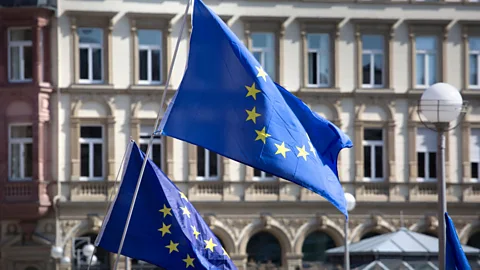 Oliver Kessler/Alamy
Oliver Kessler/AlamyAs World War Two drew to a close in 1944, Belgium, Luxembourg and The Netherlands ed together to establish the Benelux. This party of three recognised the benefits that would come over the following, inevitably difficult, decades from working together, and were hoping to encourage trade through a customs agreement.
Building on Benelux, the 1957 Treaty of Rome created the European Economic Community (EEC), an expanded customs union of six founding member states (Benelux plus West , and Italy).
By the early 1980s, there were 10 EEC , and while only quick border checks were being enforced between the nations, the reality was that this still stopped the flow of traffic, required man-power and was increasingly seen as unnecessary red tape. The concept of unilateral internal border-free travel split the , however, with half wanting free movement for EU nationals only and thus remaining committed to internal border checks to distinguish between EU and non-EU nationals.
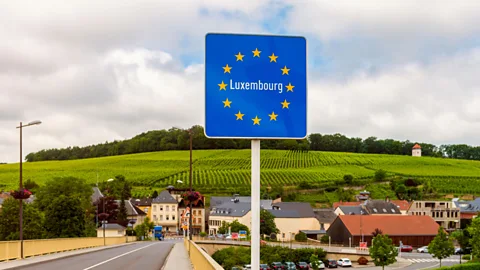 Allard Schager/Alamy
Allard Schager/AlamyAs Martina Kneip, manager of the European Museum Schengen, explained: "The idea of open borders in 1985 was something extraordinary – like a kind of utopia. Nobody really believed that it could become reality."
It was left to the remaining five (Benelux, and West ), keen to implement the free-flowing movement of all people and goods, to spearhead the creation of the area to which Schengen would give its name.
Why Schengen?
As Luxembourg was soon to take over the EEC presidency, the small nation was entitled to choose where the g of this treaty would take place. It just so happens that Schengen is the only place where and both with a Benelux member, securing it as the destination of choice.
As the meeting place of three countries, the choosing of Schengen was drenched in symbolism. To ensure it was a neutral affair, the signatories were assembled on a pleasure cruiser, the MS Princesse Marie-Astrid, to put pen to paper. The cruiser was moored as close as possible to the tri-point border, which runs down the middle of the Moselle River.
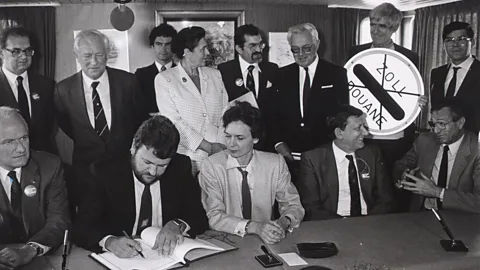 The European Museum
The European MuseumRegardless, the g in Schengen failed to attract a great deal of or attention at the time. As well as the five EEC member states who were against it, many officials from all sides simply didn't believe it would come into force or succeed. So much so, there wasn’t a single head of state from the five g nations present on the day.
From the outset, the agreement was underestimated, “considered an experiment and not something that would last,” according to Kneip. This was compounded by the inevitable red tape that ensured the complete abolition of internal borders within the five founding countries didn’t materialise until 1995.
The Schengen Area today
Today, the Schengen Area comprises 26 member states. Of these, 22 are of the EU, while four (Iceland, Switzerland, Norway and Liechtenstein) are not.
Schengen has its critics now as it did then. The recent migrant crisis and the 2015 Paris attacks undermined Schengen, giving those against open borders plenty of ammunition to strike at the inclusive efforts made by the agreement.
Despite this, the Schengen Area continues to grow, even if the process of ing remains cumbersome. Politics still determine who can , since new must be unanimously voted in. Bulgaria and Romania, for example, have repeatedly been vetoed from ing Schengen largely due to concerns over domestic corruption and the security of their external borders. In fact, no country has ed the Schengen Area for several years; Liechtenstein was the last addition in 2011.
 Zoonar GmbH/Alamy
Zoonar GmbH/AlamyNevertheless, the pros of Schengen far outweigh the cons for the majority of people. As Kneip observes: “The Schengen Agreement is something that affects the everyday lives of all the Schengen member states – some 400 million people.”
For locals, this can mean anything from visiting friends and going to work to nipping into Luxembourg to take advantage of the country's relatively low tax on fuel when compared with its neighbours, diesel in particular.
As for travellers, the Schengen Agreement grants immediate access to all member countries, making travel – be it by road, rail or air – quicker and easier. Add to this the Schengen visa, which allows non-EU travellers to apply for a single visa valid for 90 days with entry to all participating countries, and its appeal is blindingly clear, saving travellers both time and money.
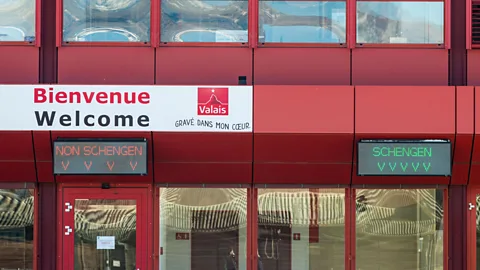 Henri Martin/Alamy
Henri Martin/AlamyWhat of Schengen itself?
Since Schengen is removed from any major artery, you’re only likely to find yourself there if you make a conscious effort to go. Around a 35km drive from Luxembourg City, the route takes you through forests, over farmland and down into the Moselle Valley. The landscape changes quite noticeably as you descend the rural hills to the town of Remich. From here, it's a pleasant riverside drive, winding between vine-clad slopes and the Moselle River to the epicentre of Schengen, the European Museum. Here, the story of how the Schengen Area came to exist is expertly told through interactive displays inside and a variety of monuments outside.
Don’t miss the cabinet of official border control caps from the member states at the time they ed the area, each a piece of national identity that was surrendered in order to make Schengen work. Poignant sections of the Berlin Wall sit perfectly placed in front of the museum, set there to remind us all that walls – in this case, world-famous reinforced concrete from one of its founding , no less – don’t have to remain in place forever. Further along the jetty in front of the museum, you’ll find three steles, or steel slabs, each with their own star commemorating the founding . Finally, there are the striking Pillars of Nations that beautifully detail iconic sights from each member of the Schengen Area.
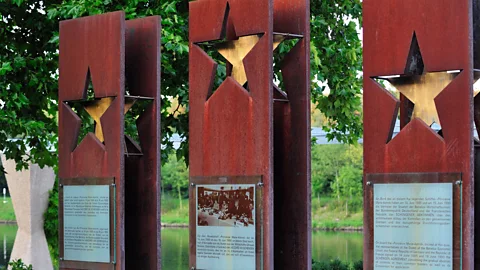 Arterra Picture Library/Alamy
Arterra Picture Library/AlamyOf course, there’s more to this laidback border village than international legislation. Visitors can extend their stay to enjoy a river cruise on the Moselle, go hiking or cycling in the surrounding hills, or set about sampling some crémant (the region’s revered sparkling white wine) to get a true taste of life in Schengen, the tiny rural village now committed to the annals of history.
CORRECTION: A previous version of this story incorrectly stated the direction in which the Moselle River flows. We have adjusted the text accordingly.
Places That Changed the World is a BBC Travel series looking into how a destination has made a significant impact on the entire planet.
more than three million BBC Travel fans by liking us on Facebook, or follow us on Twitter and Instagram.
If you liked this story, sign up for the weekly bbc.com features newsletter called "If You Only Read 6 Things This Week". A handpicked selection of stories from BBC Future, Earth, Culture, Capital and Travel, delivered to your inbox every Friday.
{"image":{"pid":""}}
